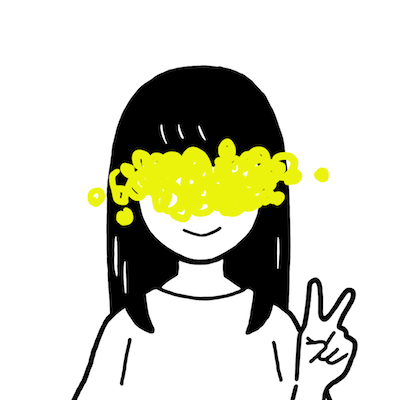bilingual-gpt-neox-4b-minigpt4
Overview
This repository provides an English-Japanese bilingual multimodal conversational model like MiniGPT-4 by combining GPT-NeoX model of 3.8 billion parameters and BLIP-2.
The model is based on rinna/bilingual-gpt-neox-4b and BLIP-2.
Model architecture
Similar with BLIP-2 and Vision-CAIR/MiniGPT-4, the model consists of an LLM, vision-encoder with ViT and Q-Former, and linear-layer for connecting the LLM and vision-encoder.
rinna/bilingual-gpt-neox-4b(A 36-layer, 2816-hidden-size transformer-based language model) is used as the LLM instead of Vicuna, which is used in the original Vision-CAIR/MiniGPT-4.Finetuning
The finetuning data is the subset of the following datasets.
- English datasets
- Japanese datasets
Based on the implementation of Vision-CAIR/MiniGPT-4, only "first pretraining stage" described in MiniGPT-4 paper with the above datasets was conducted, and "second-stage finetuning" proposed in the paper with an aligned image-text dataset created with ChatGPT was NOT conducted.
Model Series
Variant Link Bilingual 4B MiniGPT4 https://huggingface.co/rinna/bilingual-gpt-neox-4b-minigpt4 Bilingual 4B PPO https://huggingface.co/rinna/bilingual-gpt-neox-4b-instruction-ppo Bilingual 4B SFT https://huggingface.co/rinna/bilingual-gpt-neox-4b-instruction-sft Bilingual 4B 8K https://huggingface.co/rinna/bilingual-gpt-neox-4b-8k Bilingual 4B https://huggingface.co/rinna/bilingual-gpt-neox-4b Japanese 3.6B PPO https://huggingface.co/rinna/japanese-gpt-neox-3.6b-instruction-ppo Japanese 3.6B SFT-v2 https://huggingface.co/rinna/japanese-gpt-neox-3.6b-instruction-sft-v2 Japanese 3.6B SFT https://huggingface.co/rinna/japanese-gpt-neox-3.6b-instruction-sft Japanese 3.6B https://huggingface.co/rinna/japanese-gpt-neox-3.6b Contributors
Koh Mitsuda, Tianyu Zhao, and Kei Sawada
Release date
July 31, 2023
I/O Format
A special format has been adopted to construct inputs.
- An input prompt is formatted as a conversation between
ユーザーandシステム. - Each input utterance consists of (1) its speaker (
"ユーザー"or"システム"), (2) a colon (":"), (3) a whitespace (" "), and (4) utterance text (e.g."猫はどんな体勢をしていますか?"). - An utterance including an image is formatted as (1) its speaker (
"ユーザー"), (2) a colon (":"), (3) a whitespace (" "), (4) a placeholder of the image ("<Img><ImageHere></Img>"), (5) another whitespace (" "), (6) utterance text (e.g."What can you see?").- The placeholder (
<ImageHere>) is automatically replaced with the embedding of an input image in the functionget_context_emb.
- The placeholder (
- The input prompt should be ended with
"システム: "to acknowledge the model to generate a response. - All the utterances in the input prompt should be separated by a newline
\n.
Following is an example to construct input from a conversation.
prompt = [
{
"speaker": "ユーザー",
"text": "<Img><ImageHere></Img> What can you see?"
},
{
"speaker": "システム",
"text": "a cat on a table with a laptop"
},
{
"speaker": "ユーザー",
"text": "猫はどんな体勢をしていますか?"
},
]
prompt = [
f"{uttr['speaker']}: {uttr['text']}"
for uttr in prompt
]
prompt = "\n".join(prompt)
prompt = (
prompt
+ "\n"
+ "システム: "
)
print(prompt)
"""
ユーザー: <Img><ImageHere></Img> What can you see?
システム: a cat on a table with a laptop
ユーザー: 猫はどんな体勢をしていますか?
システム:
"""
How to use the model
1. Download dependencies
- BLIP-2 implementation included in MiniGPT-4 is used for inference.
customized_mini_gpt4.pyis a script to replace LLM from LLaMA architecture to GPT-NeoX one.checkpoint.pthis a finetuned weight of the linear layer (file size: 177 MB).
git clone https://github.com/Vision-CAIR/MiniGPT-4.git
cd ./MiniGPT-4
git checkout 22d8888 # latest version as of July 31, 2023.
wget https://huggingface.co/rinna/bilingual-gpt-neox-4b-minigpt4/resolve/main/customized_mini_gpt4.py
wget https://huggingface.co/rinna/bilingual-gpt-neox-4b-minigpt4/resolve/main/checkpoint.pth
2. Inference
Please run this script in MiniGPT-4 directory.
import torch
import requests
from PIL import Image
from minigpt4.processors.blip_processors import Blip2ImageEvalProcessor
from customized_mini_gpt4 import CustomizedMiniGPT4
ckpt_path = "./checkpoint.pth"
model = CustomizedMiniGPT4(gpt_neox_model="rinna/bilingual-gpt-neox-4b")
tokenizer = model.gpt_neox_tokenizer
if torch.cuda.is_available():
model = model.to("cuda")
if ckpt_path is not None:
print("Load BLIP2-LLM Checkpoint: {}".format(ckpt_path))
ckpt = torch.load(ckpt_path, map_location="cpu")
model.load_state_dict(ckpt['model'], strict=False)
vis_processor = Blip2ImageEvalProcessor()
image_url = "https://huggingface.co/rinna/bilingual-gpt-neox-4b-minigpt4/resolve/main/sample.jpg"
raw_image = Image.open(requests.get(image_url, stream=True).raw).convert('RGB')
image = vis_processor(raw_image).unsqueeze(0).to(model.device)
image_emb = model.encode_img(image)
embs = model.get_context_emb(prompt, [image_emb])
output_ids = model.gpt_neox_model.generate(
inputs_embeds=embs,
max_new_tokens=512,
do_sample=True,
temperature=1.0,
top_p=0.85,
pad_token_id=tokenizer.pad_token_id,
bos_token_id=tokenizer.bos_token_id,
eos_token_id=tokenizer.eos_token_id
)
output = tokenizer.decode(output_ids.tolist()[0], skip_special_tokens=True)
print(output)
"""横になっています。"""
How to cite
@misc{rinna-bilingual-gpt-neox-4b-minigpt4,
title = {rinna/bilingual-gpt-neox-4b-minigpt4},
author = {Mitsuda, Koh and Zhao, Tianyu and Sawada, Kei},
url = {https://huggingface.co/rinna/bilingual-gpt-neox-4b-minigpt4}
}
@inproceedings{sawada2024release,
title = {Release of Pre-Trained Models for the {J}apanese Language},
author = {Sawada, Kei and Zhao, Tianyu and Shing, Makoto and Mitsui, Kentaro and Kaga, Akio and Hono, Yukiya and Wakatsuki, Toshiaki and Mitsuda, Koh},
booktitle = {Proceedings of the 2024 Joint International Conference on Computational Linguistics, Language Resources and Evaluation (LREC-COLING 2024)},
month = {5},
year = {2024},
pages = {13898--13905},
url = {https://aclanthology.org/2024.lrec-main.1213},
note = {\url{https://arxiv.org/abs/2404.01657}}
}
